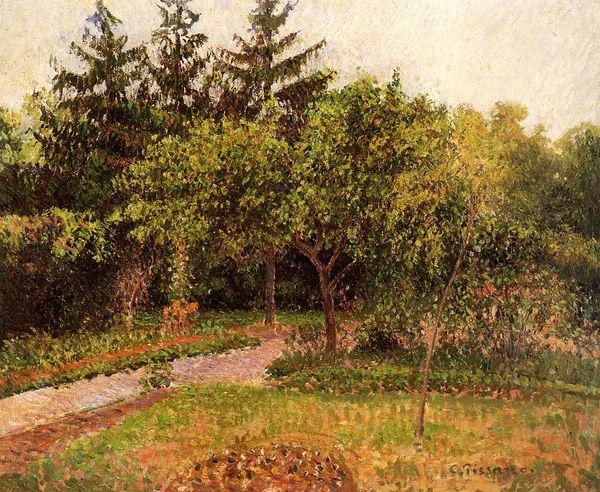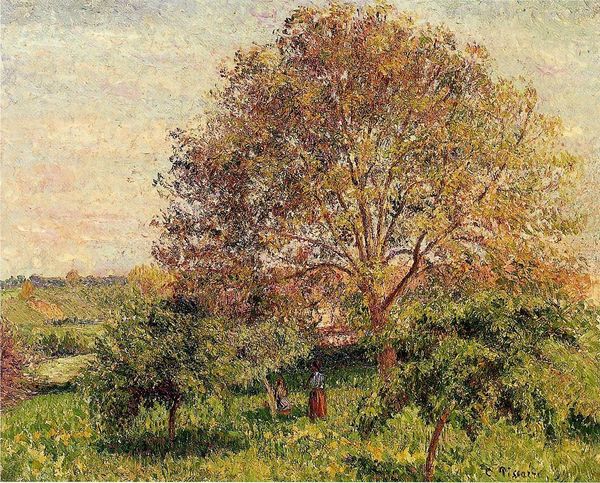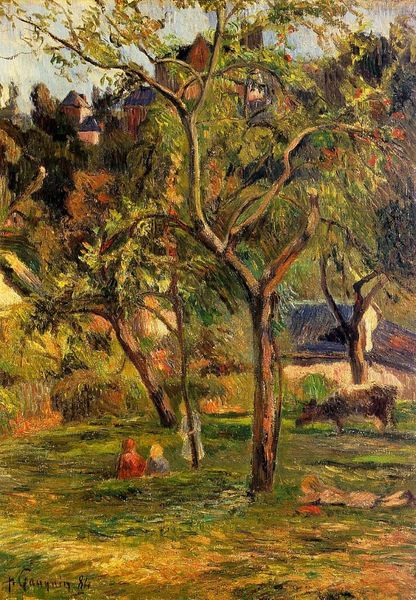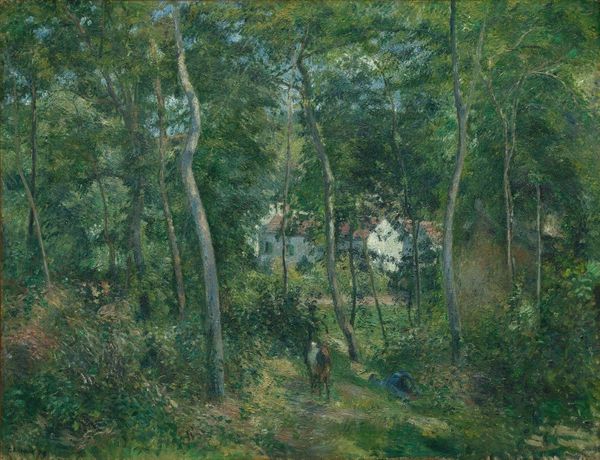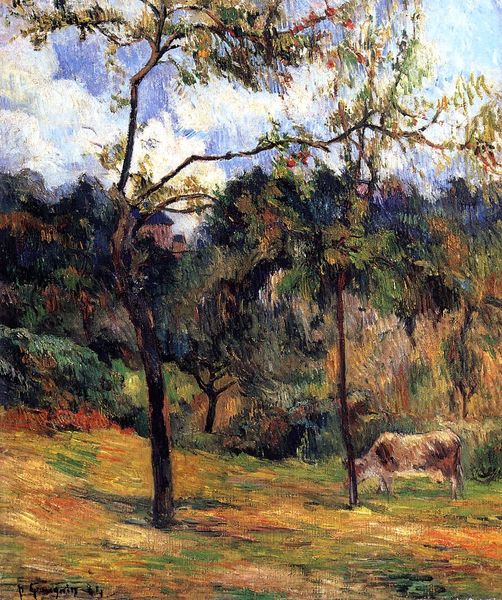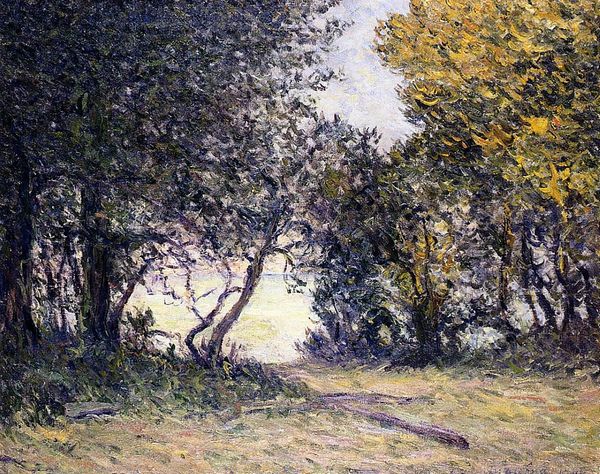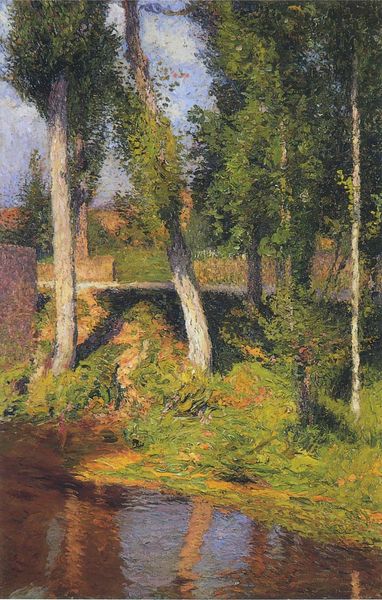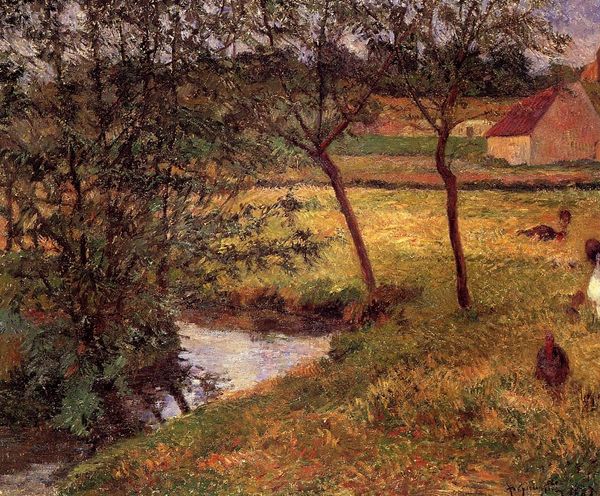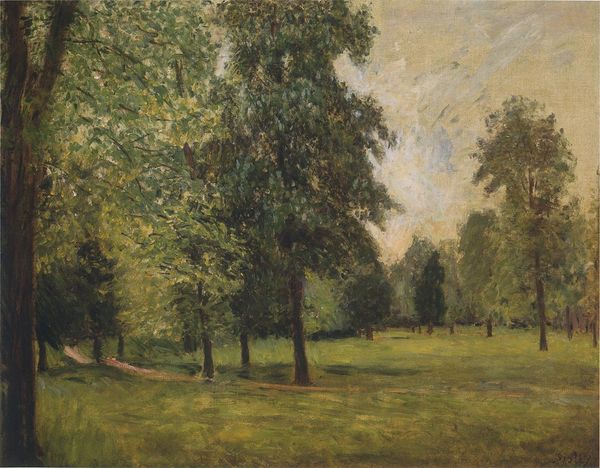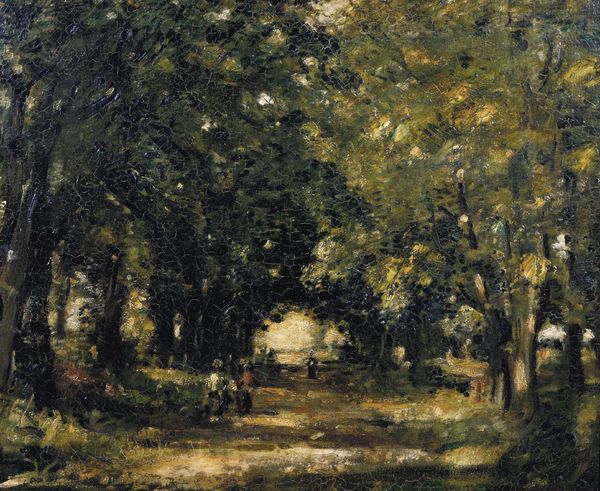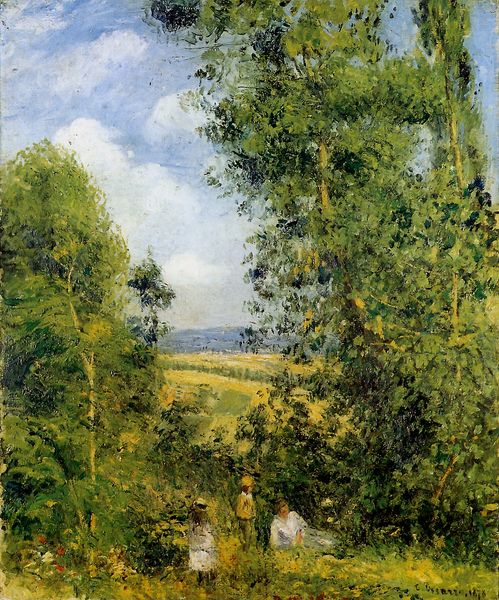
Dimensions: 46 x 55 cm
Copyright: Public domain
Curator: We're standing before Camille Pissarro's "The Barn, Morning, Eragny," painted in 1893. He captures a tranquil rural scene using oil paint on canvas. Editor: It’s peaceful. The dappled light, the verdant hues...there’s a sense of quiet labor. I wonder what life was like for the figures inhabiting this space, especially for women. Curator: Pissarro moved to Eragny in 1884 and immersed himself in rural life, depicting it through this impressionistic lens. What's striking is his application of paint – small, individual strokes that create a vibrating surface. Consider the work involved to produce this type of scene by an artist in the late 19th Century. Editor: Exactly! It reflects a tension—celebrating rural life, but perhaps idealizing it. Who is tilling the soil, under what conditions? Is the artwork accessible? The figure in the barn looks burdened to me. Curator: There is an element of idyllic representation. Pissarro’s technique is rooted in scientific approaches, particularly regarding color and light theories. The layering and juxtaposition of colors aimed to achieve the visual effects he observed in nature. The material cost must have been something for the laborers to bear witness to. Editor: Right, it prompts me to reflect on land ownership, the hierarchy between artist and subject, and how these scenes were consumed, then and now. What does this barn represent materially? Who would work in that field, who profits from the field. Is this about land enclosure? Curator: Pissarro’s commitment to capturing these rural scenes came from his belief that modern art should represent everyday life. He had socialist political convictions and even produced prints with anarchist themes. He even supported fellow impressionist painters. Editor: And that background definitely enriches how we see the work, lending context. It is important to question art. Curator: Understanding the artistic, scientific and production conditions surrounding this piece deepens our appreciation for its material reality. Editor: Yes, examining social context pushes us to confront how representations can simultaneously reveal and obscure the complexities of history and the ongoing struggle for equity. I’m left to question who can access such privilege.
Comments
No comments
Be the first to comment and join the conversation on the ultimate creative platform.
